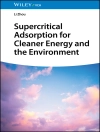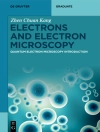This book addresses the application of Raman spectroscopic techniques to a range of diverse problems which arise in the study, conservation and restoration of artefacts and sites closely related to our cultural heritage as well as in authentication. These themes are naturally wider than what at first might be considered as artworks and archaeological artefacts and the topics include pigments, paintings, ceramics, glass, sculpture and patination / corrosion, textiles, industrial archaeology, the degradation and preservation of biomaterials, mummies and human skeletal remains. An interesting feature is the inclusion of modern case studies which describe specific problems and approaches to the Raman spectral analysis of items important to our cultural heritage. The text is prefaced with an introduction to the important parameters used in nondestructive Raman measurements and also highlights some future applications based upon novel miniaturised instrumentation for in-field studies andpotential screening work which will identify specimens which would repay further studies in the laboratory. An attempt is made to give a snapshot of the state-of-the-art evolution since the beginning of the technique (1970s) and to point out potential further development. The book is co-edited by three international experts with many years’ experience in the application of Raman spectroscopy to artworks, archaeological artefacts and in the investigation of materials and sites for cultural heritage preservation and each editor has undertaken to write individual chapters and different topics personally. The adopted approach is designed to convey the sort of information which has become available from the adoption of analytical Raman spectroscopy to different problems in the field of cultural heritage preservation through the spectral interrogation of artefacts and how the interpretation of the spectral data can assist museum curators, archaeologists and cultural heritage historians in the preservation and conservation of ancient materials and sites : a particular advantage in this respect is the ability of Raman spectroscopy to determine –generally in a strictly noninvasive procedure – at the laboratory or on-site with mobile instruments, the presence of both organic and inorganic components in a particular specimen together nondestructively without any chemical and mechanical pretreatment being undertaken, which is an essential requirement for rare and valuable samples . An important aside from this work is the means of spectral identification of ongoing biodeterioration and biological colonisation in specimens in storage and the effects of environmental deterioration such as humidity and temperature upon their integrity.
Table des matières
Foreword.- Historical Overview.- Theory and Understanding.- Combination of RS and Other Techniques.- Pigments, Dyes and Coloured Agents.- Cultural Heritage Meets Art Forensics.- Jewellery and Gemstones.- Cave Paintings and Rock Art.- From Frescoes to Paintings.- Analytical Raman Spectroscopy of Manuscripts and Maps: The Role of Inks.- Patina, Corrosion and Conservation Treatment.- Glass, Pottery, Enamelled Artefacts.- Archaeology of Biomaterials: Mummies, Ivories, Resins, and Textiles.- Raman Spectroscopy and Industrial Archaeology.- Raman Spectroscopic Analysis of a Putative Century Oil Painting Depicting William Shakespeare.- “Noli Me Tangere”: A renaissance Original? A Holistic Analytical Spectroscopic Challenge.- A Case Study. Raman Spectroscopic Analysis Of Welsh Porcel.- Case Study: In-Field and On-Site Raman Spectroscopic Analysis.- Case Study: Non-Invasively Documenting the Transfer of Enamelling Technology form Europe to China and Japan. The role of the Jesuits in the 17th Century.- Case Study: The Shroud of Turin – Iconic Relic or Fake? The Role of Raman spectroscopic Analysis in its Forensic Appraisal.- Case Study: A Unique Rockingham English Porcelain Table. A Holistic Forensic Analysis.- A Little Knowledge is Dangerous Thing. A Miscellany of Faux-Pas in the Cultural Heritage Of Literature.- Raman Analysis: What is Straightforward, What is Difficult and Future Perspectives.
A propos de l’auteur
Professor Howell G.M. Edwards M.A., B.Sc., D. Phil., C.Chem., FRSC. Howell Edwards is Professor Emeritus of Molecular Spectroscopy at the University of Bradford. He read Chemistry at Jesus College in the University of Oxford and after completing his B.A. and B.Sc. degrees he studied for his doctorate in Raman spectroscopy at Oxford with Dr Leonard Woodward and then became a Research Fellow at Jesus College, University of Cambridge. He joined the University of Bradford as a Lecturer in Structural and Inorganic Chemistry, becoming Head of the Department of Chemical and Forensic Sciences, and was awarded a Personal Chair in Molecular Spectroscopy in 1996. He has received several international awards (Sir Harold Thompson Award; Charles Mann Award; Emanuel Boricky Medal; Norman Sheppard Award) in a spectroscopic career which has resulted in the publication of over 1350 research papers in Raman spectroscopy and the characterisation of materials, along with six books on the application of this analytical technique to art, archaeology and forensic science. He has had a lifelong interest in porcelains and the industrial archaeology , excavation and the preservation of early porcelain manufactory sites , many of which have now disappeared in urban expansion .He has authored six major books on porcelains and has also produced several monographs on the manufactories at Swansea and Nantgarw and the people associated with them. Howell Edwards is Honorary Scientific Adviser to the de Brecy Trust on the scientific evaluation of their artworks and paintings.
Professor Philippe Colomban, ENSCI engineer, M.Sc., Docteur es-Sciences Physiques. Philippe Colomban is CNRS Research Director Emeritus at Sorbonne Université. After an MSc in Ceramics, Glass & Cement Engineering (ENSCI-Sèvres) in 1975 and a MSc in Solid State Physics at Université Pierre-et-Marie Curie in 1976, Philippe Colomban obtained in 1979 the Ph.D. Hab. degree (Docteur es-Sciences Physiques) from the Université Pierre-et-Marie-Curie. He was one of the first in the world to develop Sol-Gel routes for advanced optoelectronic PLZT ceramics. He prepared single crystals, ceramics and studied their superionic conductors’ structure and ion and proton mobility. From 1989 to 1993 he was in charge of the new projects at the Materials Department of ONERA, the French Establishment for Aerospace Research and Development (materials for rockets and missiles, aircraft engines, Sol-Gel routes, ceramic- or polymer-matrix composites, fibres, nanoparticle-based microwave absorbing materials and Functionally Graded composites…) and worked as Consultant at the ONERA for 10 further years. From 1994 to the present, as CNRS Research Professor his research interests include Materials Science and Raman, IR and neutron spectroscopy (in situ analysis, fuel cells, electrolysis, fibres/composites…). Attention is paid to the correlation between Raman parameters and mechanical and electrical (ionic, electronic) properties…as well to the identification of the technology used in ancient ceramics, glasses, paintings and buildings. Ph. Colomban has published two books, more than 500 peer-reviewed papers, many book chapters and has applied for 10 patents; he has presented more than 100 invited talks and was visiting professor in Japan, Korea, South Africa, and Tunisia. He is Associated Editor of the Journal of Raman Spectroscopy and member of several Editorial Boards of journals devoted to Spectroscopy, Materials Science or Archaeometry.
Professor Peter Vandenabeele, is a professor at Ghent University and head of the Raman spectroscopy research group. He is a doctor in analytical chemistry and has performed research on applications of Raman spectroscopy in several research fields, including cultural heritage artefacts. He is member of the department of Archaeology at Ghent University and an associated member of the department of Chemistry at the same institution. His main research topics involve novel applications of Raman spectroscopy, especially involving the development and application of mobile instrumentation. Until the present time, Peter Vandenabeele has co-authored 170+ research papers and several books on this research topic and often gives invited presentations at international conferences.












